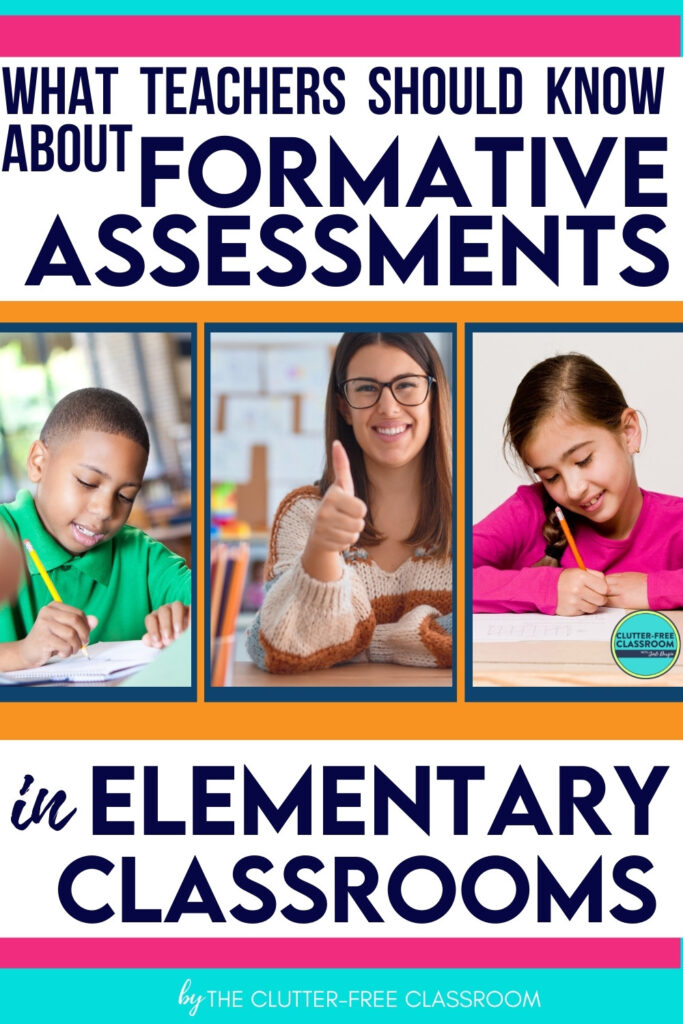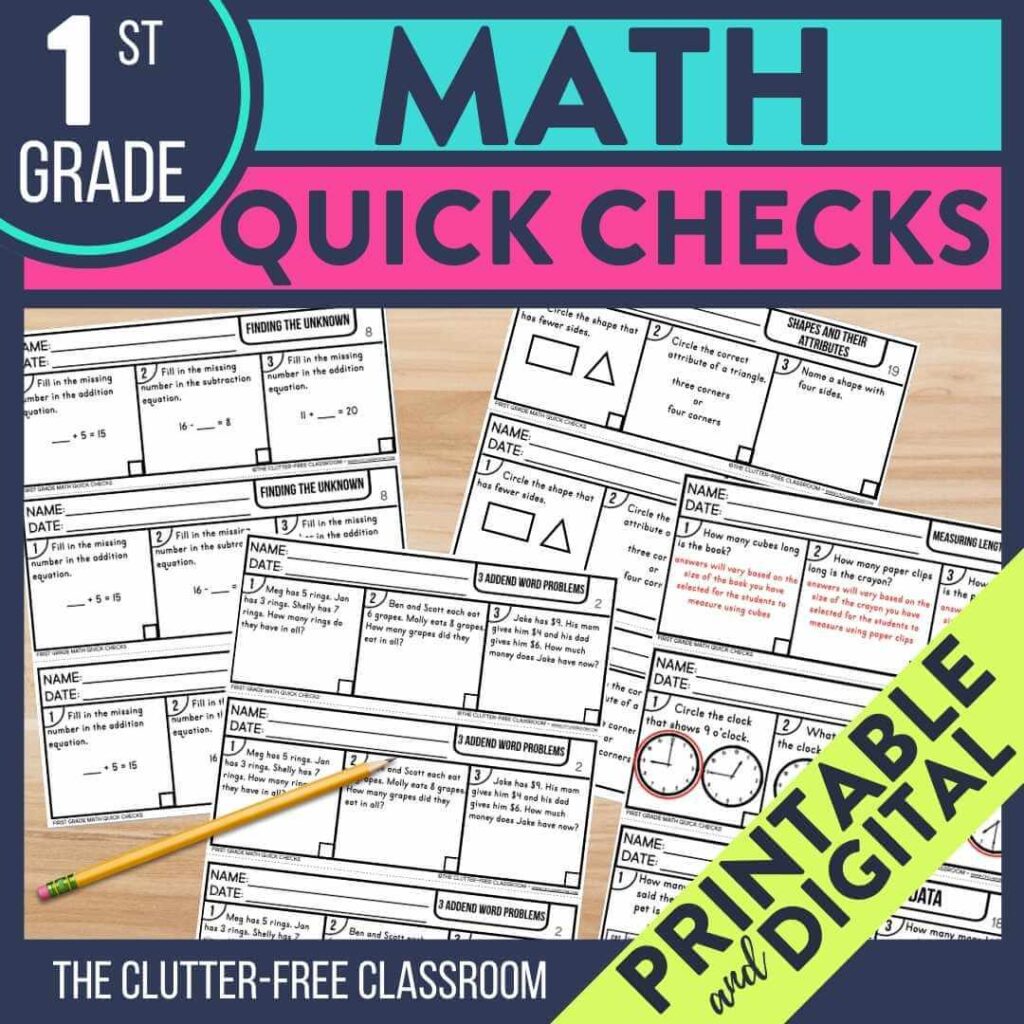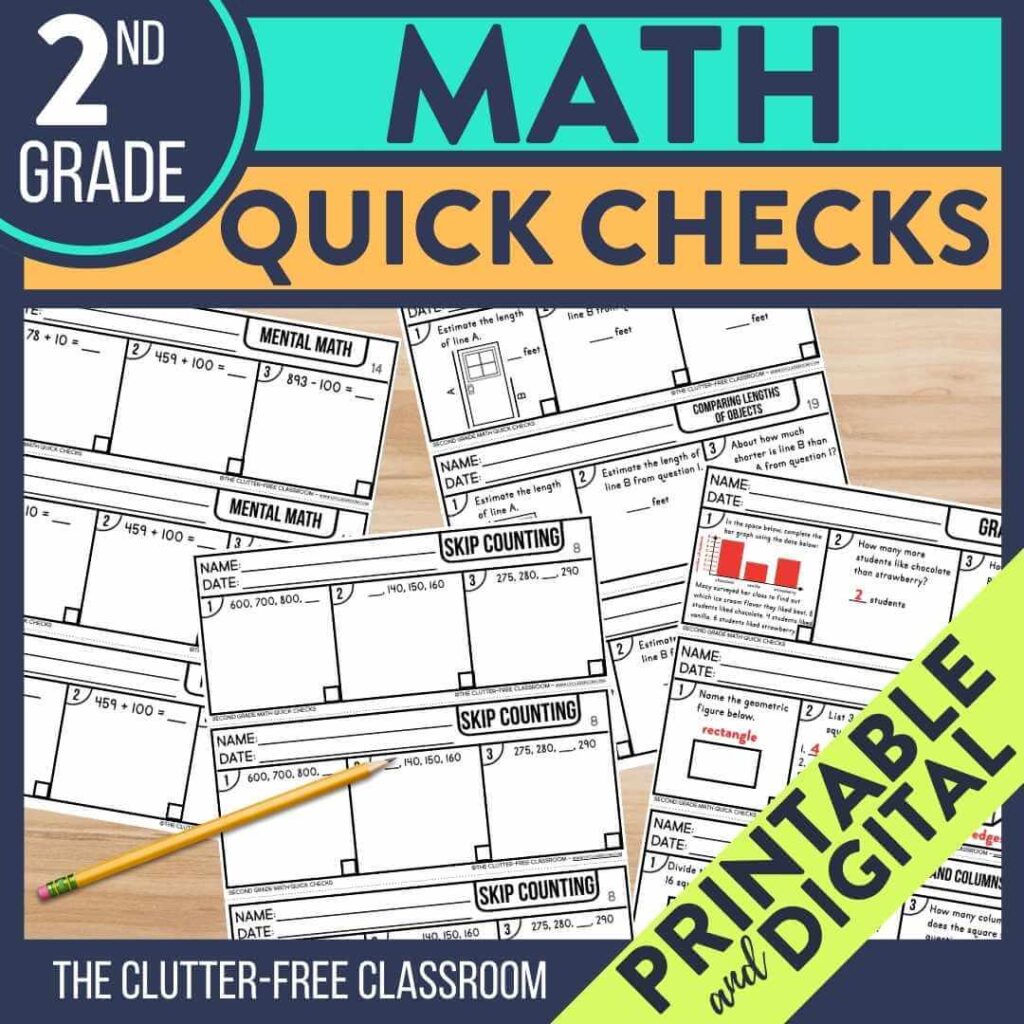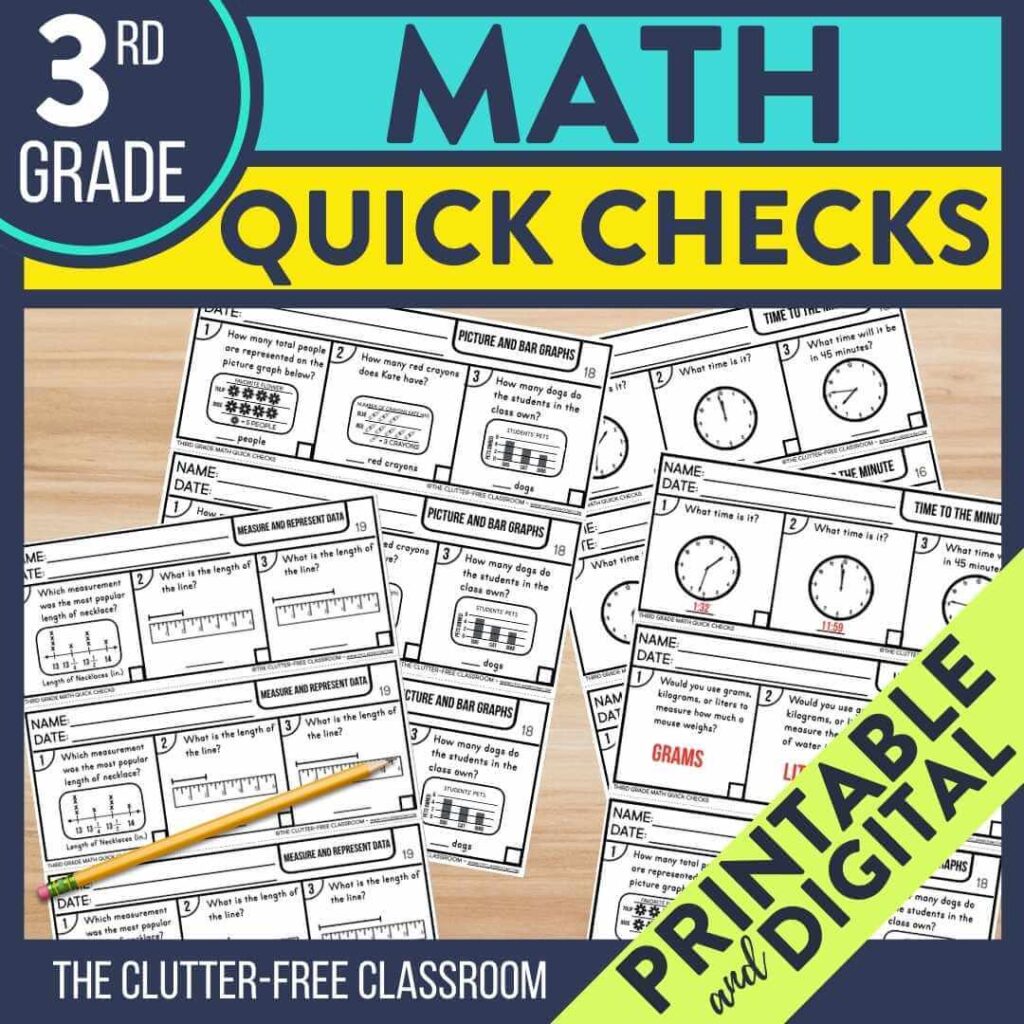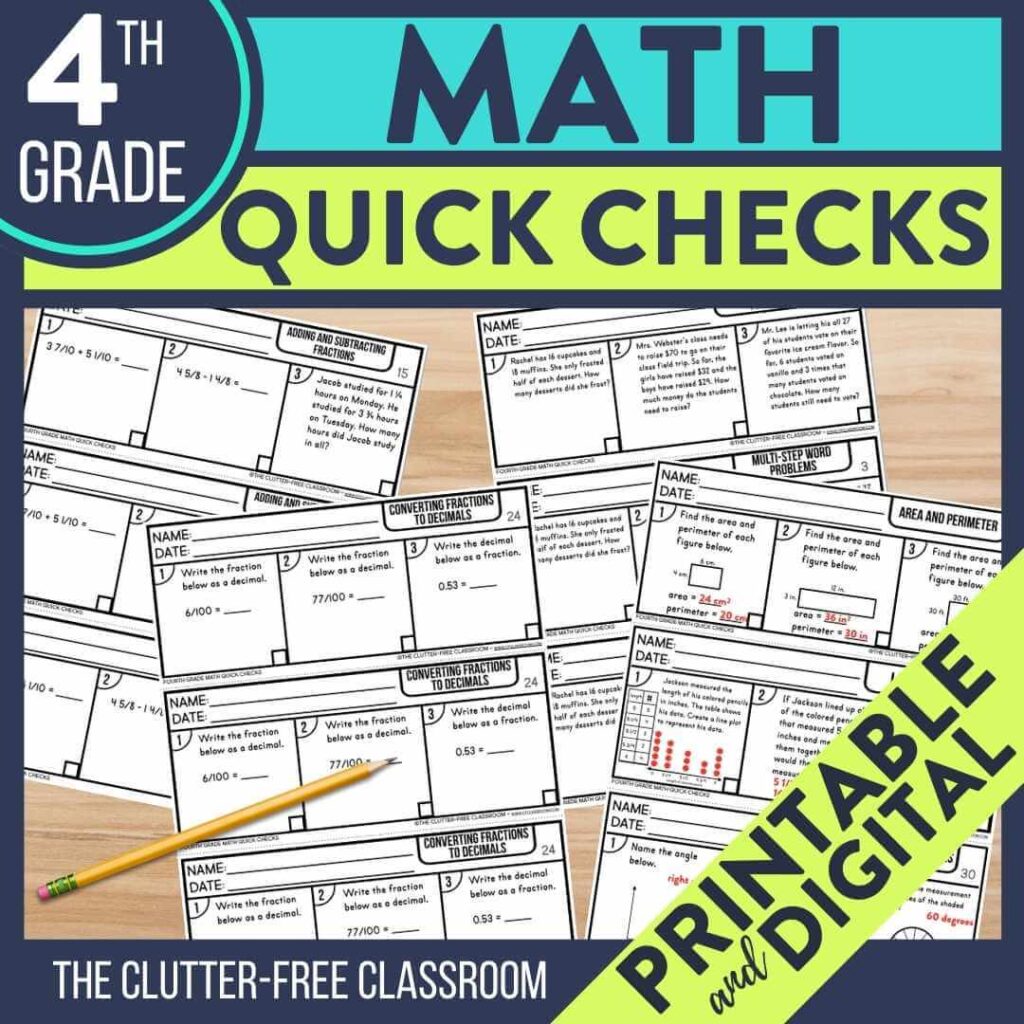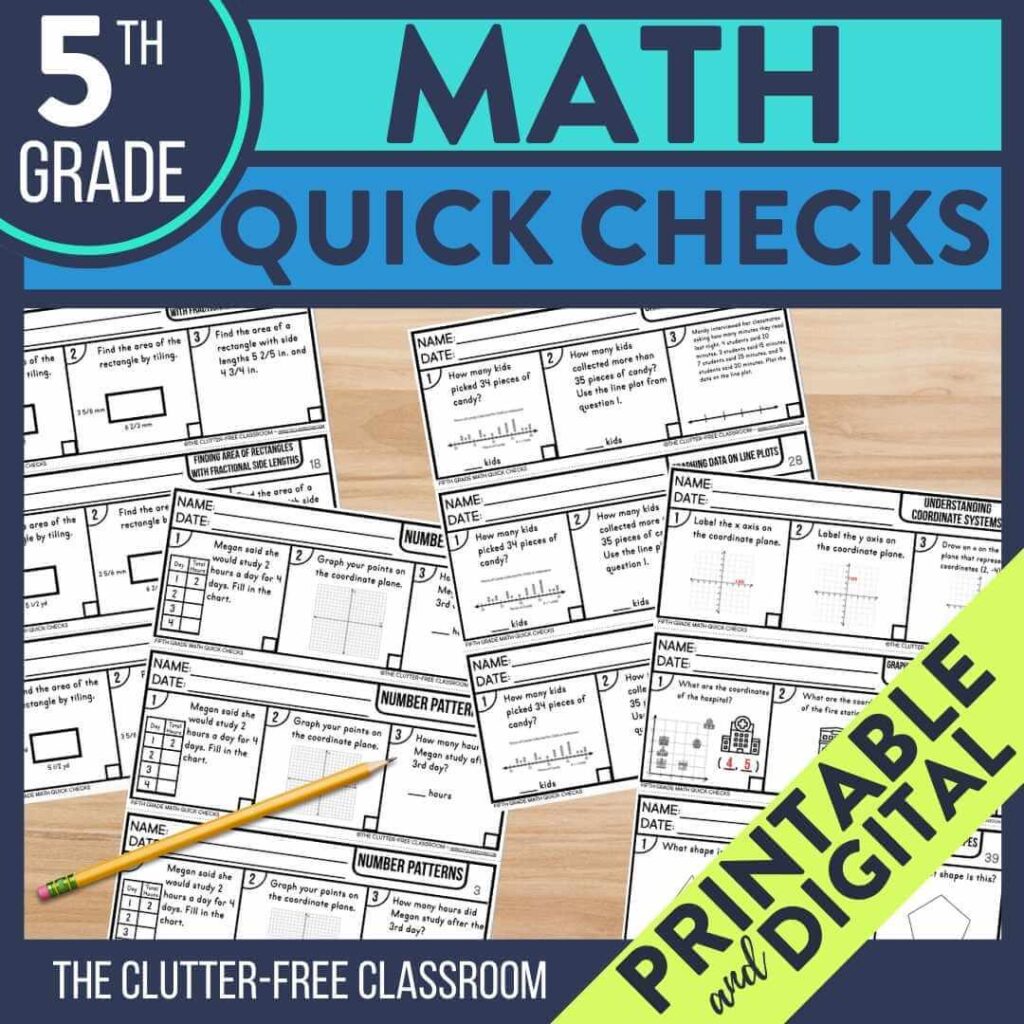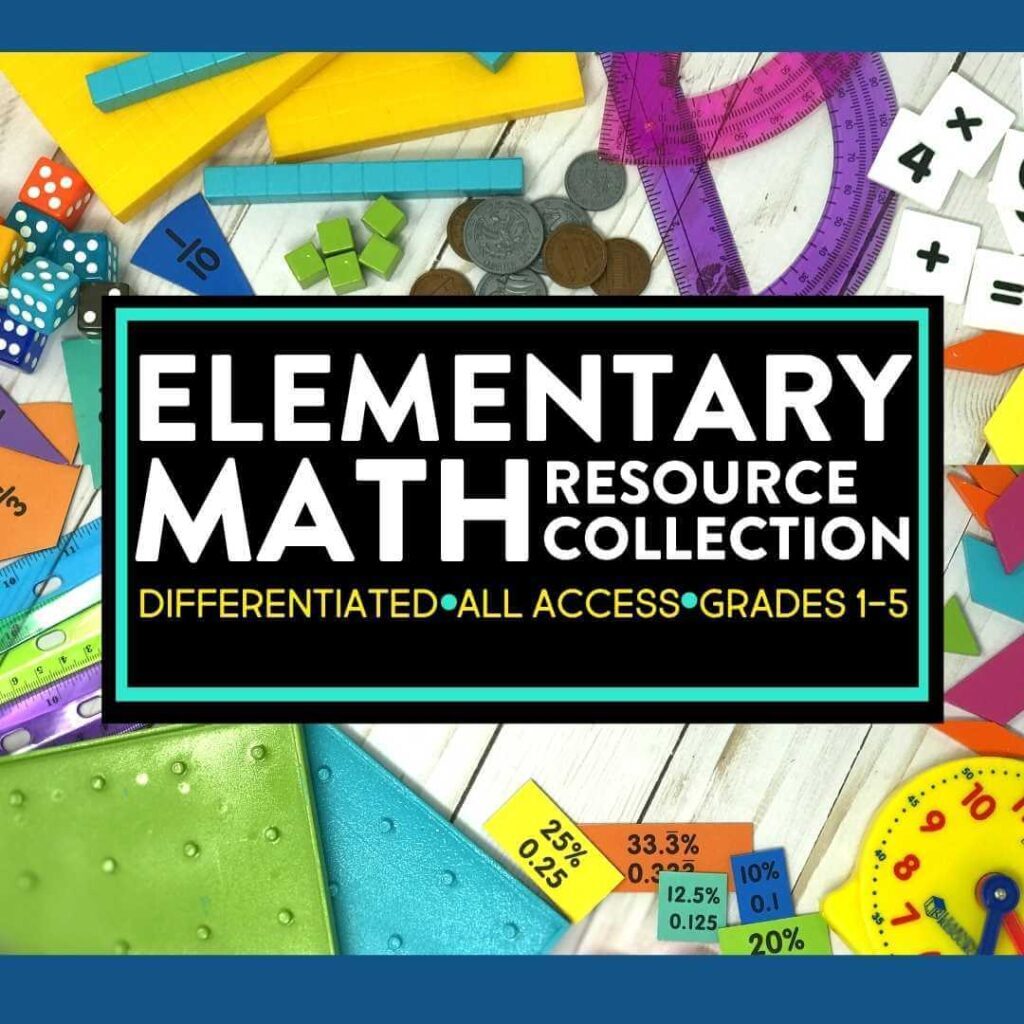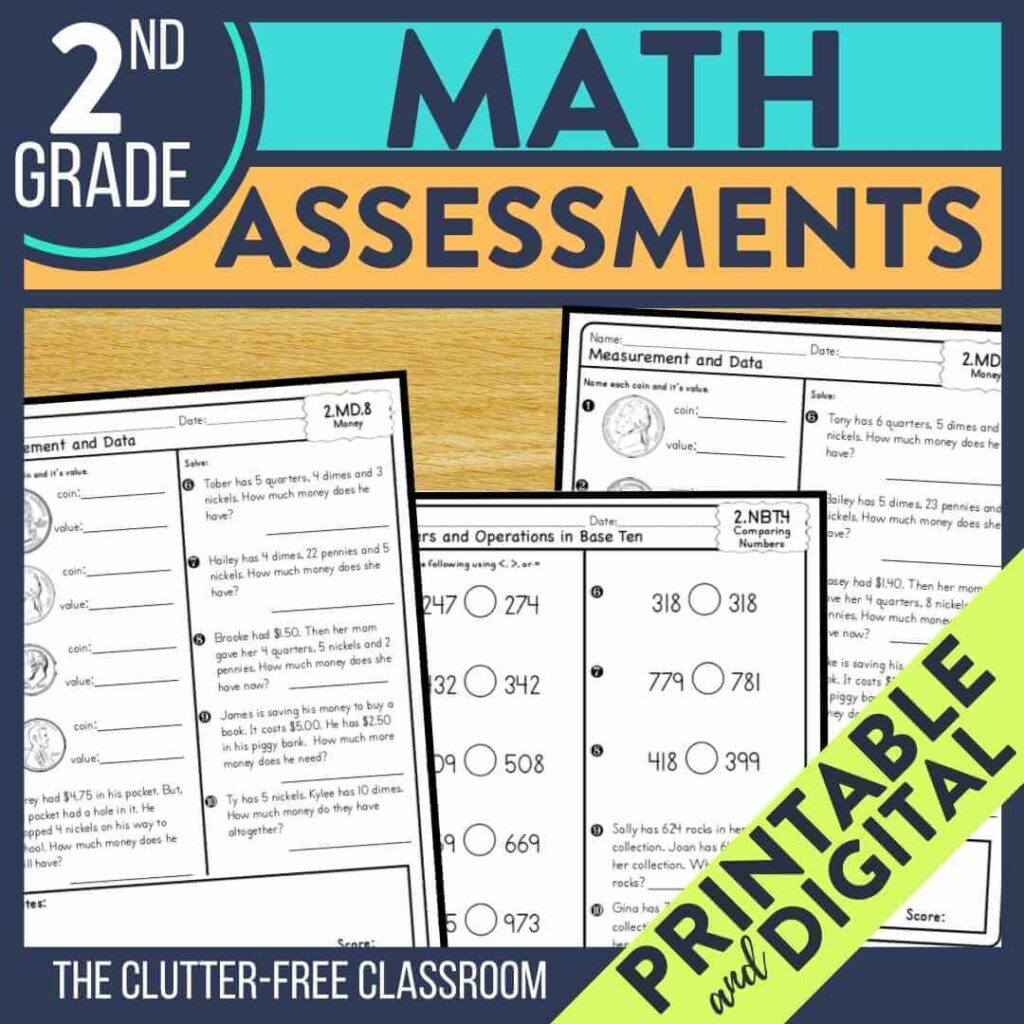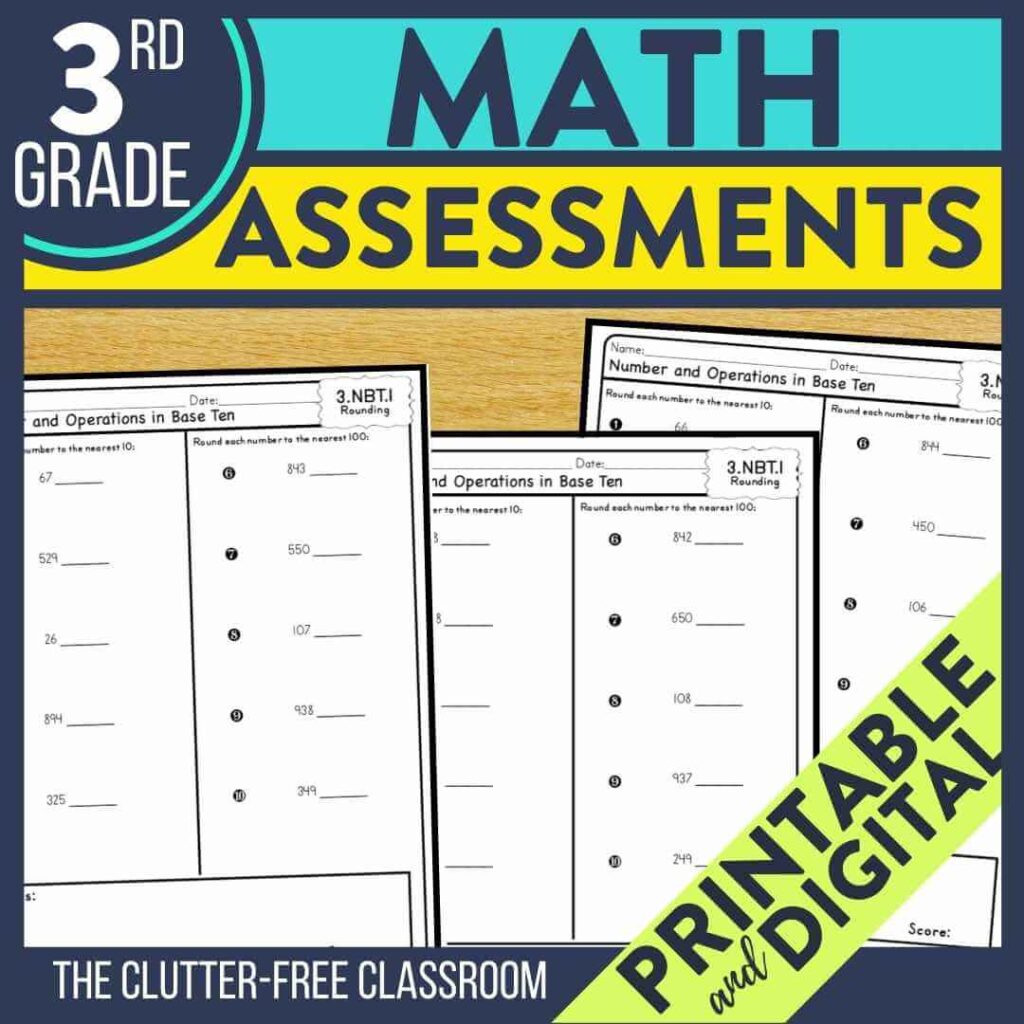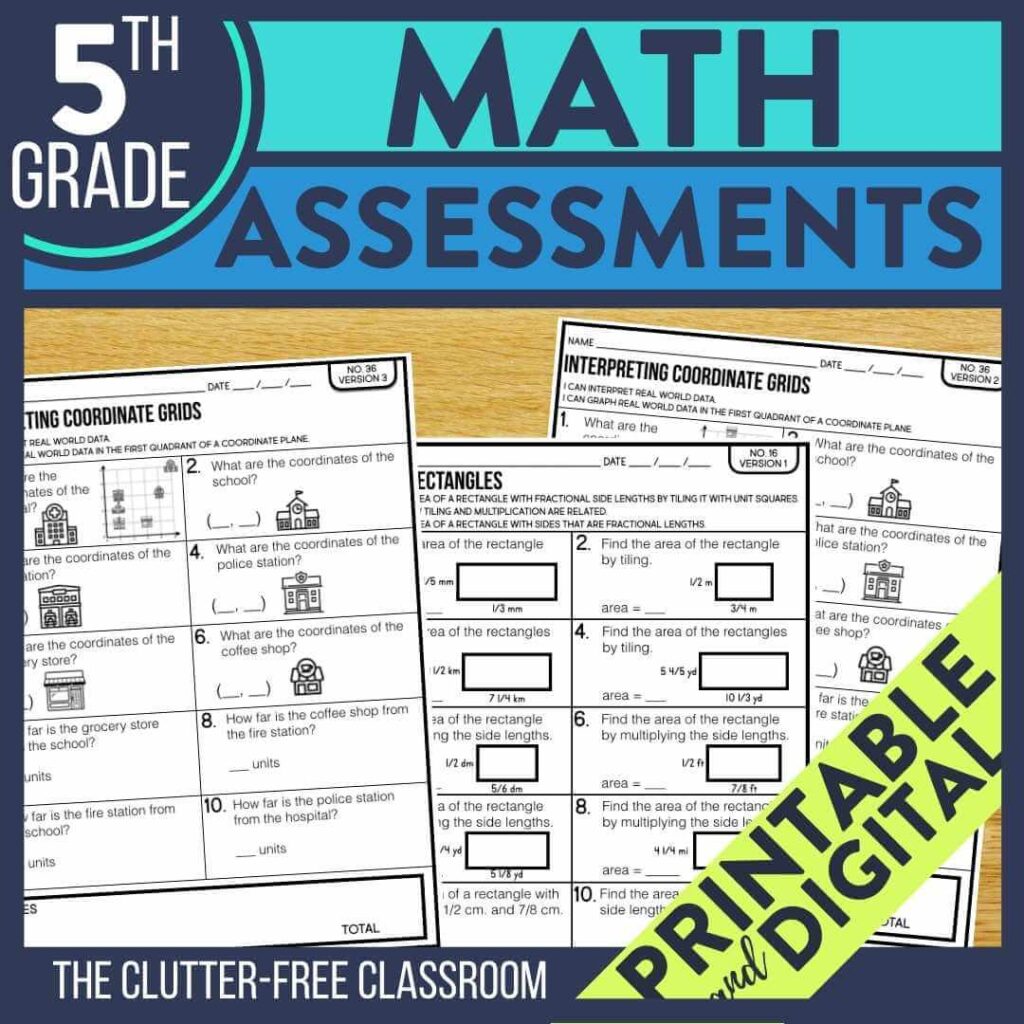No matter where or what grade you teach, assessment is likely an ongoing topic of conversation in your school (during staff meetings, school-provided professional development, and performance reviews). There are so many types of assessments being talked about: Formative, summative, informal, formal, standardized, diagnostic, benchmark, and much much more. It can feel very overwhelming – and rightfully so! Read below to alleviate some of this feeling of overwhelm by learning all about formative assessment in the classroom.
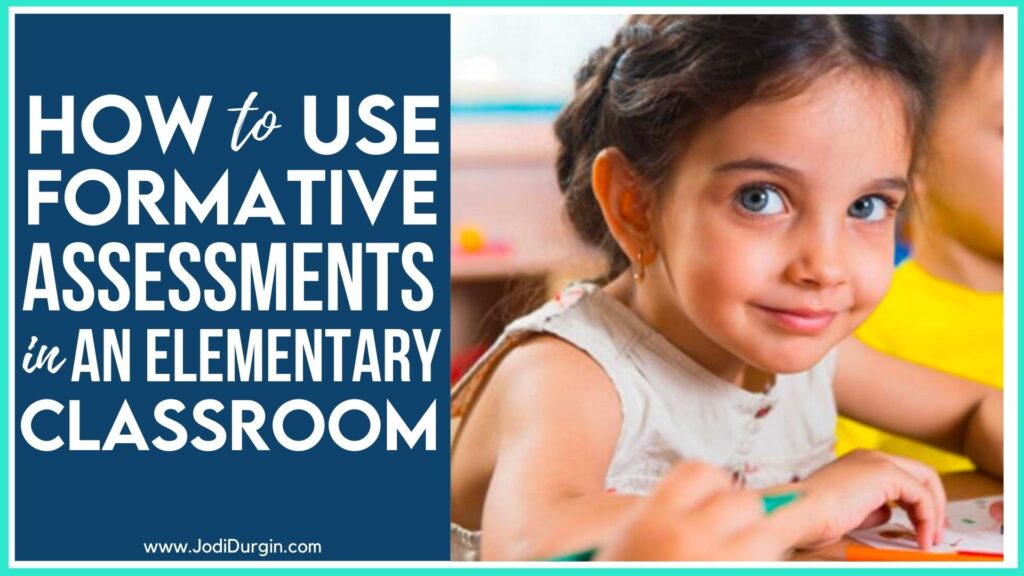
What is formative assessment?
The definition of a formative assessment in the education field is a type of informal assessment that teachers use to quickly and effectively collect student data and use the results to not only track their students’ progress, but also to inform and drive their instruction. Formative assessments can be graded and counted towards students’ final grades; however, most of them should not. They can be described as a daily progress monitoring tool used in the classroom before, during, or after instruction for teaching and learning purposes. Learn more about formative assessment in the classroom below!
What is the difference between formative assessment and summative assessment?
Formative assessment and summative assessment are both types of assessments, however let’s talk about how they are different from one another. Here are 5 ways they are different:
- Formative assessments are informal assessments and summative assessments are formal assessments.
- The goal of formative assessments is to monitor student learning and inform instruction and the goal of summative assessments is to evaluate student learning.
- Formative assessments are given during a unit of study and summative assessments are given at the end.
- Formative assessments focus on the individual performance and needs of students, and summative assessments normalize students’ scores and compares them against a predetermined standard of achievement.
- They have little to no impact on a student’s grade, but summative assessments have a large impact on a student’s grade.
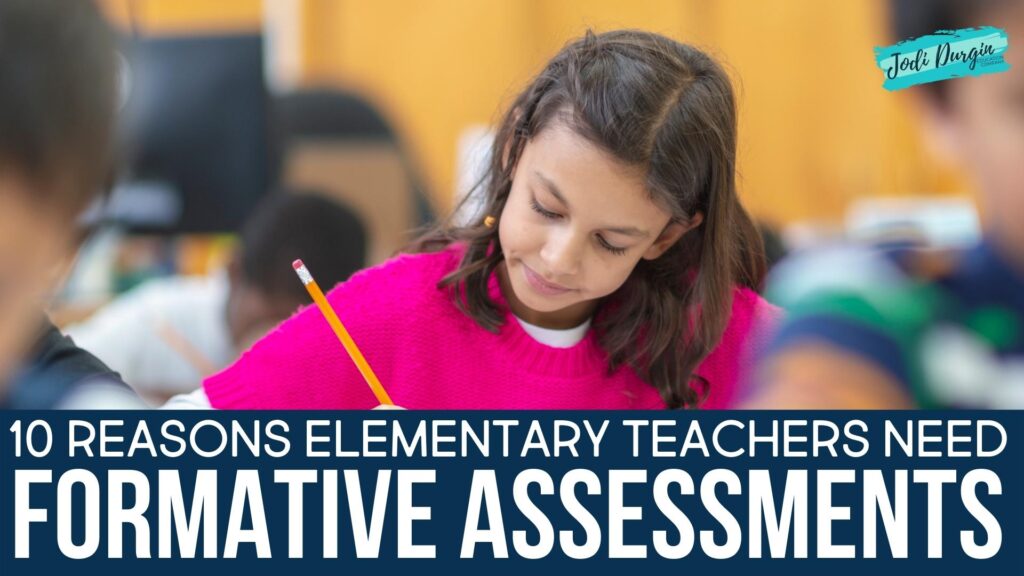
Why is formative assessment important?
There are many benefits to using formative assessments in your elementary classroom. It has become an integral part of best teaching practices. Here are 10 reasons why you need to be using formative assessment in your classroom daily:
Making Data-Driven Decisions
Formative assessments empower you to be able to make data-driven decisions for your classroom. For example, you can determine if a concept or skill needs to be retaught as a whole group, small group, or individual basis, or if you can move on to the next topic or lesson. You will have the information you need at your fingertips to make informed decisions for your individual class.
Delivering Individualized Instruction
The information you collect through formative assessments helps you provide appropriate and individualized instruction to all of your students. After collecting the information, you can analyze it, sort it, and use it to plan and deliver instruction that is appropriate for the various needs in your classroom.
Reflecting on Learning
Formative assessments provide opportunities for students to reflect on their learning, current understanding, and thinking in a stress-free way.
Reflecting on Teaching
Similar to the previous reason, formative assessments provide teachers the opportunity to pause and reflect on their teaching practices, specifically what strategies are and are not working in their classroom.
Identifying Student Misunderstandings
Formative assessments allow you to quickly identify student misunderstandings while you are teaching or at the end of the school day – depending on the format of the formative. You’ll be able to address these misunderstandings in the moment or at the beginning of the next school day.
Increasing Student Engagement
Questioning techniques and other formative assessment strategies require students to be active participants in their learning. This could involve students simply putting 1, 2, or 3 fingers up in the air, writing their response to a prompt on a white baord, or filling out an exit ticket.
Increasing Student Achievement
Research has shown that progress monitoring throughout the use of formative assessments has resulted in higher test scores.
Deepening Understanding of Students
Once you start using formative assessments daily, you will be amazed how well you get to know your students, how their brains work, and their current abilities and understandings of your grade level and previous grade level content. Formative assessments are incredibly powerful tools!
Developing a Growth Mindset Culture
Students learn over time that it’s okay if they don’t understand a concept or skill the first time it is taught to them. They will have many opportunities to continue to learn and practice and their teacher will support them throughout this journey. Even if they don’t get it the first time, they need to persevere to reach their goals using a growth mindset.
Empowering Teachers with Flexibility in Teaching
The idea behind using formative assessments is that we need to monitor how well students are learning the content being presented to them. It acknowledges that the teacher should have the autonomy to decide what is best for his or her group of students using the data as the guide.
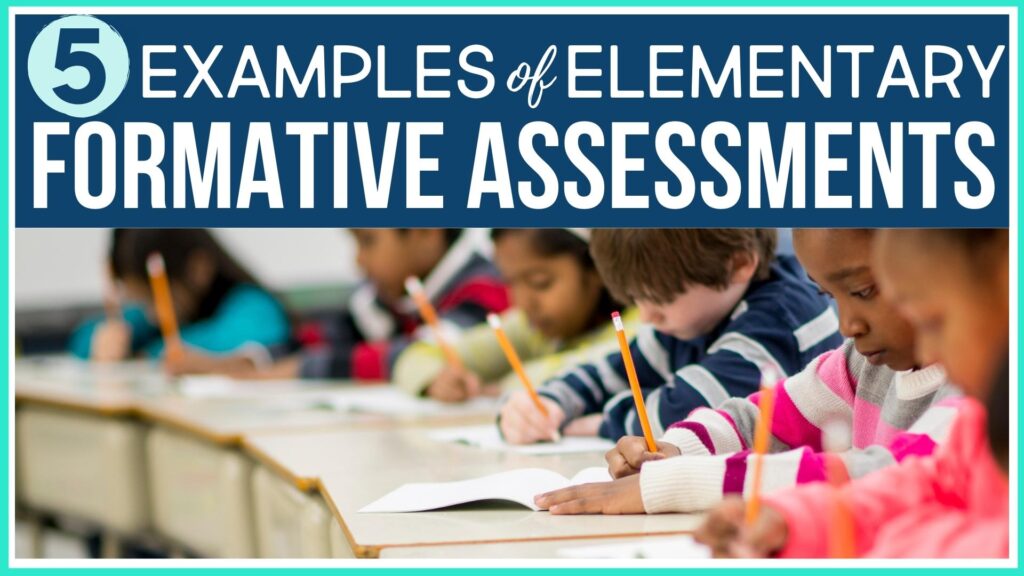
What are some examples of formative assessment strategies?
Below are 5 formative assessment examples you can use with any lesson
Questioning Techniques with Hand Signals
Pose a problem or ask a question to the class and invite them to respond using their fingers. The number of fingers should represent a specific response. For example, prior to posing the question you could assign that one finger represents yes and two fingers represent no. Another system could be that one finger represents A, two fingers represent B, three fingers represent C, and four fingers represent D in a multiple choice scenario. This technique allows you to quickly assess your group as a whole to gauge student understanding.
Think-Pair-Share
Have students sit next to a partner when sitting on the rug. This serves as a very helpful classroom management strategy, and sets students up for engaging in think-pair-share. Start think-pair-share by posing a question, situation, or prompt to students. Give them independent “think time.” Next, ask them to share their thinking with their partner. Lastly, invite a handful of students to share out their thoughts with the whole group.
Four Corners
This will likely be a kid favorite, especially for those students who benefit from body breaks. One way to implement this formative assessment strategy is to assemble a list of multiple-choice questions (with four answer choices) and assign a letter (A, B, C and D) to each of the corners of the classroom. Students start each question at the center of the classroom. After saying the prompt, the teacher provides students “think time” before letting them choose their corner. When the teacher says go, students can move to that corner.
Another way to implement this is by assigning the corners numbers or words. For example, you could label the corners of the classroom with 5, 10, 15, and 20 and ask students addition problems. They will move to the corner that is labeled with the sum of the problem prosed. There are tons of ways to implement this strategy. Be creative and have fun with this activity!
Stop Light
Create two-sided cards (a green side and a red side) using construction paper. I recommend laminating them so they last all year long. Pause throughout a given lesson to check student understanding by instructing them to hold up the card displaying how confident they are feeling in the content. Green means they are following along and understand everything they are learning and red means they are feeling stuck and confused. They can also use these when they are working independently by putting the card on the top of their desk displaying the card that represents how they are feeling.
Exit Slips
Exit slips are a highly effective formative assessment tool to give at the end of a lesson. Check out these 20 exit tickets you can use with any lesson. They are a quick way to informally assess how well your students understood what you’ve taught. I designed them to include a simple self-assessment section using a thumbs-up / thumbs down image. As a result, you can tell at a glance which students need your help. These are great for planning future instruction, forming small groups, and preventing misbehavior that can occur when there is downtime at students transition at the end of a lesson.
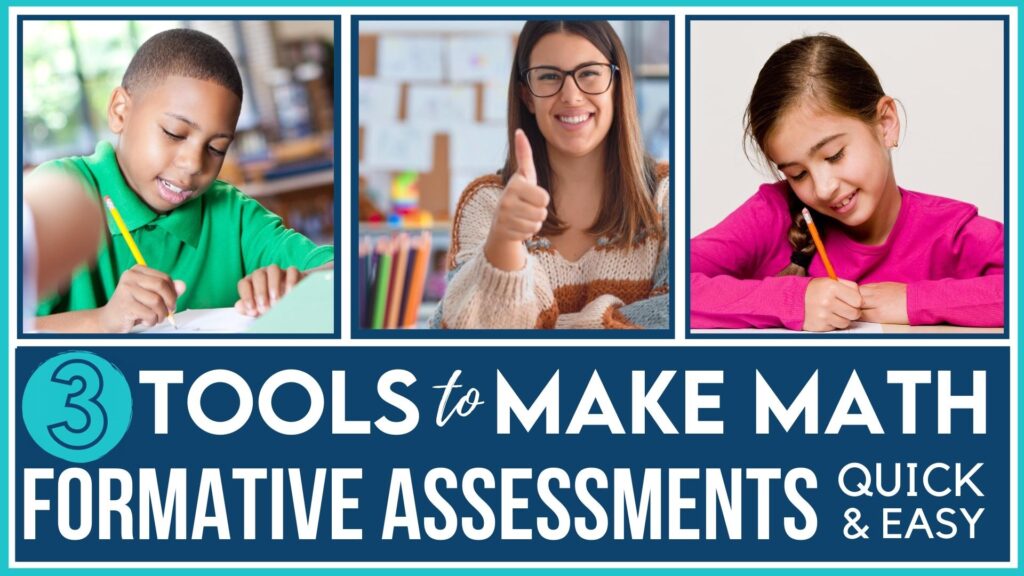
3 Formative Assessments for Math Specifically
There are tons of awesome math formative assessment tools, strategies, methods, and ideas out there for classroom use, but here are my 3 favorite!
1. Xtra Math
Incorporate technology in your formative assessments approach through the use of Xtra Math, an online math fact fluency practice tool that you can set up for FREE! You can customize it to fit your students’ individual needs. It can be programmed to practice the following operations: Addition, subtraction, multiplication, and division. One great feature is that it provides instant feedback to students when they are playing. It can be used with all students in your classroom, including those who receive support through special education services. For example, there is an American Sign Language version to support students who are deaf.
2. Math Exit Tickets
Use these math quick check assessments as an exit ticket in your small guided math group or during the closing of your math workshop. They are quick and easy to grade (only 3 questions). They are aligned to the Common Core state standards. Learn more about them below!
- 1st Grade Exit Tickets
- 2nd Grade Exit Tickets
- 3rd Grade Exit Tickets
- 4th Grade Exit Tickets
- 5th Grade Exit Tickets
3. Math Benchmark Assessments
These math benchmark assessments have 3 versions. They all have a consistent template. As a result, they can easily be used as benchmark assessments throughout the school year or as a pre-test, mid-test, and post-test during a math unit. Learn more about these formative assessments for the classroom below!
- 1st Grade Math Benchmark Assessments
- 2nd Grade Math Benchmark Assessments
- 3rd Grade Math Benchmark Assessments
- 4th Grade Math Benchmark Assessments
- 5th Grade Math Benchmark Assessments
We hope you found this information about formative assessment in the classroom helpful! If you did, then you may also be interested in these posts:
- Everything Elementary Teachers Need to Know about Exit Slips
- How to Use Math Exit Tickets in Your Classroom
- Tips for Using Math Benchmark Assessments to Help Your Students Ace Standardized Tests
- Quick and Easy Assessment Strategies for Elementary Teachers
- How to Use Graphic Organizers as Assessment Tools
